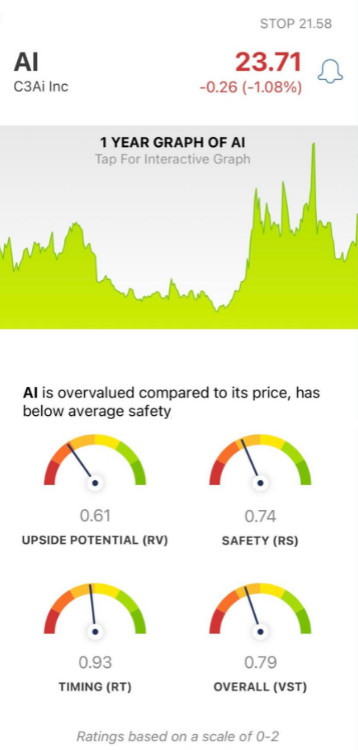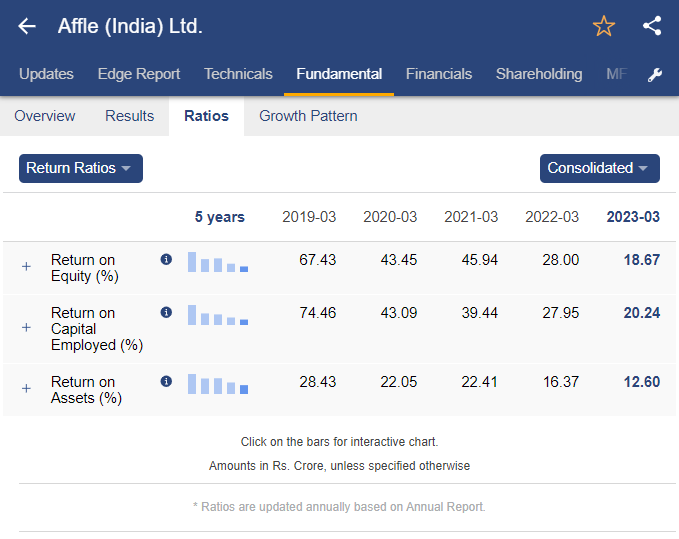In order to ensure that you have precise, reliable, and useful insights, it is crucial to examine the AI and machine-learning (ML) models utilized by prediction and trading platforms. Models that are poorly designed or hyped up could lead to inaccurate forecasts and financial losses. These are the top ten guidelines to evaluate the AI/ML models used by these platforms:
1. The model's approach and purpose
A clear objective: determine whether the model was created for short-term trading, long-term investing, sentiment analysis, or for risk management.
Algorithm transparence: Check whether the platform reveals the types of algorithm used (e.g. Regression, Decision Trees Neural Networks and Reinforcement Learning).
Customizability. Determine if the model is able to be modified according to your trading strategies, or your risk tolerance.
2. Review Model Performance Metrics
Accuracy: Check the accuracy of predictions made by the model however, don't base your decision solely on this measurement, as it may be inaccurate in financial markets.
Precision and recall - Evaluate the model's capability to recognize genuine positives while minimizing false positives.
Results adjusted for risk: Examine the impact of model predictions on profitable trading in the face of the accounting risks (e.g. Sharpe, Sortino and others.).
3. Test the Model with Backtesting
Historical performance: Use old data to back-test the model and determine what it would have done under the conditions of the market in the past.
Testing outside of sample: Make sure the model is tested on the data it was not trained on to avoid overfitting.
Scenario-based analysis: This entails testing the accuracy of the model under different market conditions.
4. Make sure you check for overfitting
Overfitting signs: Look for overfitted models. They are the models that perform extremely good on training data but less well on unobserved data.
Regularization methods: Ensure whether the platform is not overfit by using regularization like L1/L2 or dropout.
Cross-validation (cross-validation): Make sure the platform is using cross-validation for assessing the generalizability of the model.
5. Assess Feature Engineering
Important features: Make sure that the model has relevant attributes (e.g. price volumes, technical indicators and volume).
Feature selection: You should ensure that the platform is selecting features that have statistical value and avoid unnecessary or redundant information.
Dynamic feature updates: Determine that the model can be adapted to changes in features or market conditions over time.
6. Evaluate Model Explainability
Interpretation - Make sure the model gives explanations (e.g. value of SHAP and the importance of features) to support its claims.
Black-box models: Beware of platforms that use extremely complex models (e.g. deep neural networks) without explainability tools.
User-friendly Insights: Verify that the platform provides actionable insight in a format traders can easily understand and use.
7. Examine Model Adaptability
Changes in the market: Check that the model is able to adjust to market conditions that change (e.g., changes in rules, economic shifts, or black swan occasions).
Continuous learning: Determine whether the platform continually updates the model to include new information. This can improve performance.
Feedback loops. Make sure that your model takes into account feedback from users as well as real-world scenarios in order to improve.
8. Check for Bias and Fairness
Data biases: Make sure that the training data are valid and free of biases.
Model bias: Determine if the platform actively monitors the biases in the model's prediction and mitigates them.
Fairness - Make sure that the model is not biased towards or against certain stocks or sectors.
9. Evaluate the computational efficiency
Speed: Assess whether the model can make predictions in real-time, or with low latency, particularly for high-frequency trading.
Scalability: Check whether a platform is able to handle several users and massive databases without affecting performance.
Resource usage: Verify that the model has been designed to make optimal use of computational resources (e.g. GPU/TPU use).
Review Transparency, Accountability, and Other Problems
Model documentation: Ensure that the model platform has complete documentation about the model's structure, its training process and its limitations.
Third-party Audits: Verify that the model was independently checked or validated by other organizations.
Error handling: Verify that the platform has mechanisms to detect and rectify models that have failed or are flawed.
Bonus Tips
Case studies and user reviews User reviews and case studies: Study feedback from users as well as case studies in order to gauge the model's real-world performance.
Trial time: You may try the demo, trial, or a free trial to test the model's predictions and its usability.
Customer support: Check that the platform can provide robust customer support to help solve any product or technical problems.
By following these tips, you can effectively assess the AI and ML models used by stock prediction platforms, ensuring they are accurate and transparent. They should also be aligned to your goals in trading. See the best ai stocks advice for blog recommendations including stock analysis app, incite, stock predictor, ai stock trading, best ai stocks, chart ai for trading, free ai tool for stock market india, ai investing tools, best stocks to buy now, investment ai and more.

Top 10 Tips To Evaluate The Maintenance And Updates Of Ai Stock Predicting/Analyzing Platforms
To ensure that AI-driven stock trading platforms and prediction platforms remain secure and effective they should be maintained and updated regularly. Here are 10 top strategies for evaluating their updates and maintenance procedures.
1. Updates will be posted frequently.
Tip: Check how often the platform releases updates (e.g. weekly or monthly, or quarterly).
The reason: A regular update shows the active development of market trends and the responsiveness to market changes.
2. Transparency in Release Notes
Read the release notes on your platform to identify what enhancements and changes have been implemented.
Why: Transparent release notes show the platform's dedication to continual improvement.
3. AI Model Retraining Schedule
Tips: Learn how often AI models have been retrained by using fresh data.
What's the reason? As markets evolve, models need to adapt in order to stay accurate and relevant.
4. Bug Corrections and Issue Resolution
Tips Determine how quickly a platform addresses the bugs that users report or addresses technical issues.
Why? Prompt bug fixes will ensure that the platform will remain efficient and reliable.
5. Security Updates
Tips: Make sure that the platform updates regularly its security protocol to protect user data.
The reason: Cybersecurity is essential in financial platforms to prevent attacks and fraud.
6. Integration of New Features
TIP: Check to see if the platform has introduced new functions (e.g. enhanced analytics, new sources of information) in response to customer feedback or market trends.
What's the reason? The feature updates show innovation and responsiveness to user needs.
7. Backward Compatibility
Tip: Ensure that updates don't disrupt the functionality of your system or require a significant reconfiguration.
Why is that? Backward compatibility is important to ensure smooth user interface transitions.
8. User Communication During Maintenance
You can assess the dissemination of maintenance schedules or downtimes to users.
Why: Clare communication minimises interruptions and increases confidence.
9. Performance Monitoring, Optimization, and Analyses
Check to see if your platform is constantly keeping track of performance metrics like accuracy and latency and is constantly optimizing its systems.
The reason is that ongoing optimization can ensure that the platform remains effective.
10. The compliance with regulatory Changes
TIP: Determine if the platform updates its policies and features to be in compliance with the latest rules on financial regulation or data privacy laws.
Why: The compliance with regulations is vital to preserve confidence in the user and avoid legal risks.
Bonus Tip - User Feedback Integration
Verify that maintenance and updates are based on feedback from users. This indicates a strategy that is based on feedback from users and a desire to improve.
If you evaluate the above elements and other aspects, you'll be able to assess whether or not the AI trading and stock prediction platform that you select is well maintained, current, and able to adapt to changes in the market. Have a look at the most popular killer deal about ai for stock trading for site advice including ai trader, ai bots for trading, investing ai, ai stock trader, ai trading, best ai stocks to buy now, stock predictor, chart analysis ai, best ai stock, ai investing app and more.
